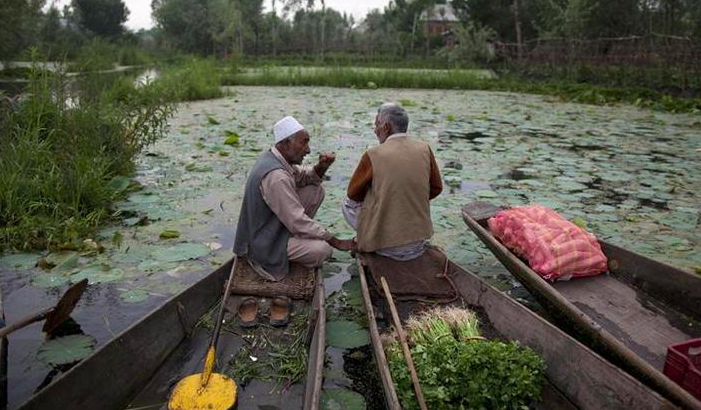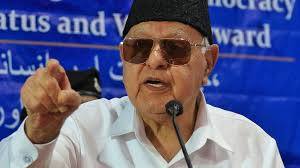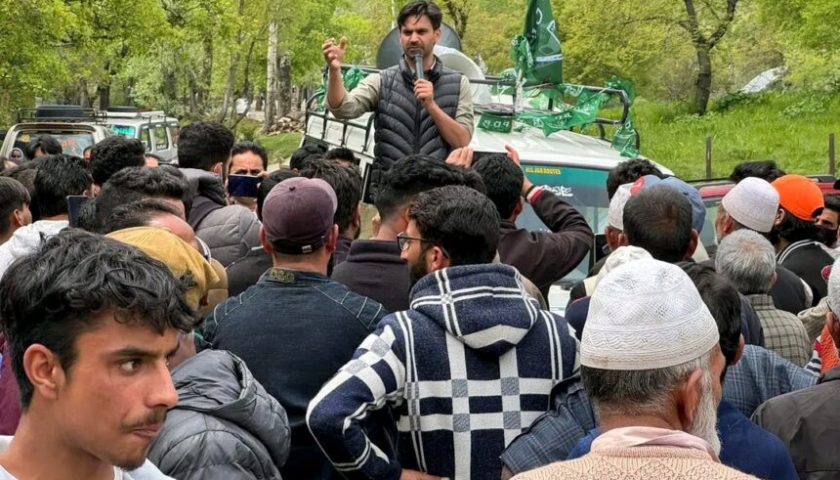Is the administration’s new land scheme an attempt to realign the region’s dynamics before the next Assembly election?
By: Anando Bhakto
A government programme to dole out land to the homeless in Jammu and Kashmir has reignited the contentious discourse on “demographic change” through a slew of government initiatives over the past four years, be it the delimitation of Assembly constituencies, land reforms, or the much-diluted domicile provision.
The National Conference and the Peoples Democratic Party have framed the government’s latest land endowment scheme as a covert bid to absorb non-locals and realign electoral dynamics before the next Assembly election is called in the union territory.
Articles 370 and 35A of the Constitution, which were abrogated in August 2019, guaranteed Kashmiri citizens exclusive rights in the ownership of immovable assets, among other things. In March 2020, the Jammu and Kashmir Reorganisation (Adaptation of State Laws) Order stipulated that any individual who had lived in Jammu and Kashmir for a period of 15 years or had studied there for a period of seven years and had appeared in a class X or XII examination from an educational institute there, would be eligible to be regarded as a domicile. Most Kashmiris believed the underlying design was to gradually change the demographics of the majority Muslim State and thus make the population irrelevant in the electoral arena.
The apprehensions grew when the delimitation of Assembly constituencies attempted to tilt the scale of electoral maths towards Jammu. When the Delimitation Commission increased the number of Assembly constituencies in Jammu and Kashmir from 83 to 90, Jammu’s share jumped from 37 to 43 seats whereas Kashmir’s tally increased by only one seat, to 47. In order to award six of the seven new constituencies to the less populous Jammu, the Commission used geography and not population as its yardstick—an aberration of the norm. As per the 2011 census, the Kashmir Valley has a population of 68,88,475 and the Jammu region 53,78,538.
Some other decisions of the Commission lent credence to this fear. People’s Alliance for Gupkar Declaration spokesperson M.Y. Tarigami told Frontline that Kishtwar in the Chenab Valley, which had a mixed population, was treated differently from the Muslim majority Poonch. “In Kishtwar, they [Delimitation Commission] created a new [Assembly] constituency, Padder, which has a population of merely 51,279 whereas in Poonch, the constituency Surankote with a population of around 1,80,000 was not altered to create an additional constituency.” According to Taragami, this flouts the constitutional provision that guarantees every citizen the right to vote on an equal representation basis.
It is against this backdrop that the Manoj Sinha administration’s decision to endow land to the homeless has become a bone of contention. On July 5, Lieutenant Governor Manoj Sinha announced a scheme to grant five marlas (a marla is roughly 270 square feet) of land to landless people under the Central government’s flagship scheme, Pradhan Mantri Awaas Yojana-Gramin. In the first phase, 2,711 beneficiaries have been identified. But it is the larger target of extending the scheme to 1.99 lakh beneficiaries by 2024, as stipulated by the Union Ministry of Rural Development, that has attracted criticism from political parties and civil society. They are worried that unless the beneficiaries are clearly defined and identified, it might “facilitate the settling of outsiders”.
Migrant workers targeted
There have been steady attacks on migrant workers in Jammu and Kashmir, and some political observers have said that it comes from the perceived threat of demographic realignment, with terrorists shifting tactics and focussing on scaring away the “outsiders”.
On July 18, two migrant labourers were shot at in Anantnag. The attack came days after three migrant workers were critically injured in terrorist fire in Shopian on July 13. The targeted attacks on migrant workers, which began in October 2019, are a departure from the past.
Omar Abdullah, former Chief Minister and leader of the National Conference, recently voiced the growing scepticism among the people. “The government should clarify who they are counting among the homeless. Are those people who have come here even a week ago also among the homeless? Is there a cut-off date?” he asked in a Twitter post. Mehbooba Mufti of the PDP was more scathing. She accused the government of “importing slums and poverty” into the region with a view to reorient the demographic composition.
A cross-section of Jammu and Kashmir’s mainstream politicians have cited figures presented by the Centre to Parliament in 2021 to show that there are only 19,047 homeless families in the region. They have questioned the figure of 1.99 lakh beneficiaries and are united in insisting that those who migrated to Jammu and Kashmir after August 2019 should not be included in the list of beneficiaries.
National Conference spokesperson Imran Dar reiterated this. “The issue is about the number. As per documented records discussed in Parliament, the number of homeless in Jammu and Kashmir is around 19,000. Where is this figure of two lakh beneficiaries coming from? Besides, we want the scheme to be restricted to those individuals and families who registered their names before August 5, 2019,” Dar told Frontline, speaking over phone from Srinagar.
Other development initiatives have created similar unease. Earlier this year, the newly envisaged Affordable Rental Housing Complexes scheme, which covers economically weaker sections and low-income groups, was thrown open to “any citizen of India who migrated to Jammu from any part of India temporarily or permanently, for employment, education, long-term tourist visit, etc.” This has also created the general impression that the government is moving forward with an “agenda of settling migrant labourers”.
Inclusive development a priority
The government refutes such allegations as hearsay, and reiterates its commitment to prioritise inclusive development in the region. “We are marching ahead with one resolve and one aim that the poorest of the poor, the Dalits, OBCs, and tribal communities have the first right on government resources,” declared Lieutenant Governor Manoj Sinha recently.
Tarigami, however, questions the government’s reluctance to involve gram panchayats to identify beneficiaries for the land sop. “When a large number of the population is wary of an influx of outsiders, it is essential to involve the elected local representatives for a headcount of the beneficiaries. This will aid the Revenue Department, and make the process fair. But the government has not responded to our suggestion,” he said.
Tarigami also recalled that the demolition drive in the union territory between December 2022 and February 2023 had wreaked havoc, particularly among the poor. Internet videos showed poor people earning livelihoods from small kiosks or farming on small patches of land suddenly losing everything. The targeting of the poor took place despite the administration’s repeated assurances that the disadvantaged sections would not be affected. (Bulldozer raj: Now in Jammu and Kashmir, February 23, 2023).
Issues with J&K Reorganisation Act
Political observers point out that despite this government’s claims to have arrested poverty and discrimination, the J&K Reorganisation Act of 2019 did away with the Big Landed Estates Abolition Act (1950), the J&K Tenancy Act (1923), and the Jammu and Kashmir Common Lands (Regulation) Act (1956), which regulated the rights of common land such as roads, streets, water channels, and other sources of water supply to villagers.
The Jammu and Kashmir Tenancy Act had, for instance, stayed all proceedings relating to ejecting tenants. The changes now enable large-scale conversion of agricultural and forest lands and give sweeping powers to the bureaucracy to acquire land with greater ease.
Sinha is not fazed by the criticism. He said at a recent public meeting in Srinagar that the opposition to his reforms came from “those who were involved in grabbing State land”.






